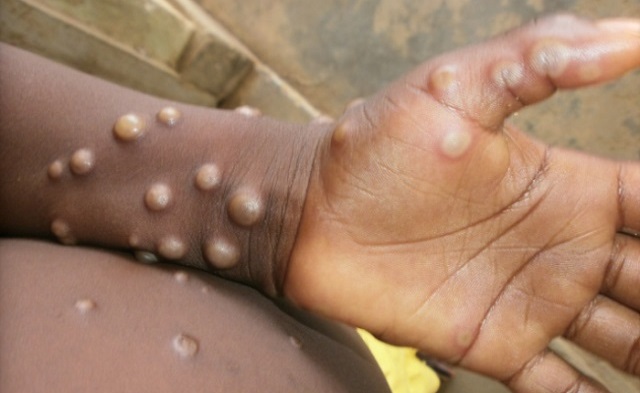
WHO offers 2,400 rapid test kits
ANALYSIS | AGENCIES | The World Health Organisation (WHO) has provided Uganda’s Ministry of Health with a set of 2,400 test kits to strengthen the country’s response to Monkeypox through rapid laboratory identification of cases.
These kits are among the first Monkeypox laboratory tools received in the country and will be used by the Uganda Virus Research Institute (UVRI) to begin testing for the disease.
Already the test kits have borne fruit as samples sent to the facility have confirmed two cases of Monkey Pox as per a statement released by the Ministry of Health on August 2.
“Since the global Monkeypox outbreak in early May 2022, Uganda has been shipping its samples to the National Institute of Communicable Diseases (NICD) laboratory in South Africa for testing. These test kits donated by WHO will allow us to provide timely results on Monkeypox in the country,” said Dr. Jane Ruth Aceng Ocero, the Minister of Health on July 25.
“…We continue to support the country to strengthen its surveillance activities to prevent any importation of cases, but also to ensure rapid detection of cases for immediate support,” said Dr. Yonas Tegegn Woldemariam, the WHO representative in Uganda.
Kenya on July 31 declared an outbreak of monkeypox (mpox) in the country following its detection in Taita Taveta, southeast of the country’s capital of Nairobi.
Mary Muthoni Muriuki, the principal secretary in the Ministry of Health, said in a statement issued in Nairobi that the disease was identified at the Taita Taveta one-stop border point in an individual traveling from Uganda to Rwanda via Kenya.
Since 2022, the DR Congo has reported over 21,000 cases and more than 1,000 deaths, according to WHO. In 2023, there were 14,626 cases and 654 deaths, and by the end of May 2024, 7,851 cases and 384 deaths had been reported.
Many of those infected are children under five (39%), and nearly two-thirds (62%) of the deaths are also among children. Health experts have identified a new strain of the virus in one part of the country.
The DR Congo shares borders with five EAC Partner States: Tanzania, Burundi, Rwanda, Uganda and South Sudan. Since then, the East African Community (EAC) Secretariat has called on EAC Partner States to educate their citizens on how to protect themselves and prevent the spread of Mpox (Monkeypox).
Burundi has confirmed three (3) cases of Mpox in Bujumbura and Isare, verified by national laboratories and the WHO. The Burundian health ministry has assured the public that measures are in place to manage the disease, with patients currently receiving treatment and showing improvement.
Kenyans have been advised to adhere to public health measures to protect themselves, their families, and the community from further spread of the diseases.
The Kenyan minister highlighted the significant risk of regional transmission due to high population movement between Kenya and other East African countries, particularly along the northern and central transport corridors.
Muriuki noted the Ministry of Health is committed to containing the outbreak and preventing further spread of the disease by working with county governments, port health facilities, and other relevant government agencies to enhance surveillance, report suspected cases, and disseminate information on preventive measures to the public.
Mpox can spread through direct contact with an infected person or through infected droplets. The disease is endemic in forested regions of East, Central, and West Africa, with a multi-country outbreak ongoing globally since May 2022, peaking in August 2022 and the period from June to November 2023.
Monkeypox is a viral zoonotic disease, which means it can be transmitted from animals to humans, and between people. Its symptoms include fever, severe headache, swollen lymph nodes, muscle pain, and a rash that forms blisters and scabs. The rash tends to be concentrated on the face, palms, and soles of the feet. The mouth, genitals, and eyes may also be affected.
Vaccination against smallpox has been shown in the past to provide cross-protection against Monkeypox. However, any immunity resulting from smallpox vaccination will only be present in people aged 42-50 years or older, depending on the country, as smallpox vaccination programmes ended worldwide in 1980 after the eradication of smallpox. The original (first generation) smallpox vaccines from the eradication programme are no longer available to the general public. In addition, the protection of those vaccinated may have waned over time.
The Uganda Ministry of Health issued guideline for prevention and handling infections. It recommended isolation and avoiding contact of affected person, reporting to medical personnel, and treating to ease symptoms such as itchiness, pain, and other complications.
 The Independent Uganda: You get the Truth we Pay the Price
The Independent Uganda: You get the Truth we Pay the Price


